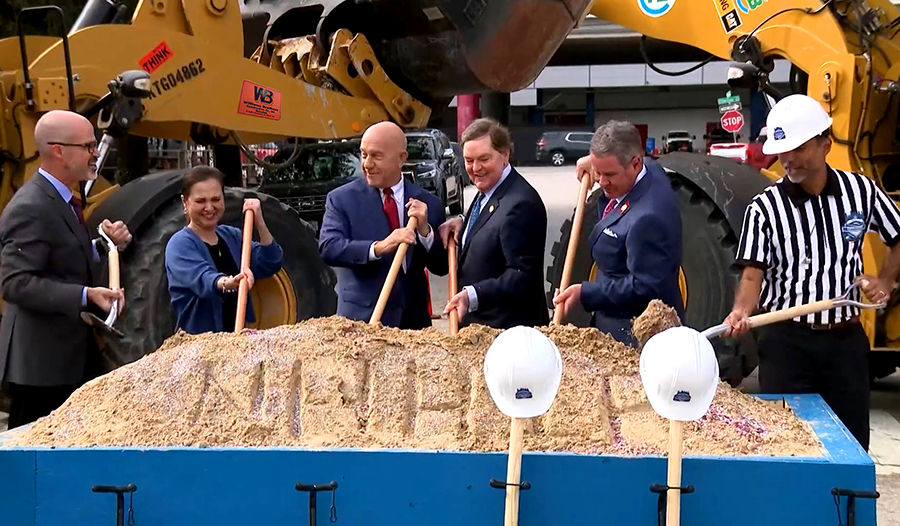
Oct. 28, 2024
By Danny Perez
HOUSTON — TxDOT leadership kicked off the I-45 North Houston Highway Improvement Project construction with a big celebration touting the $13 billion effort as a gamechanger for the Houston area.
The groundbreaking event was held at Pitch 25 in East Downtown Houston near the start of the project’s first phase. The event signified the start of construction in the East Downtown area and in the Midtown and Third Ward areas.
“We are proud to be here, opening this huge benefit for the people of Houston today and for future generations,” said J. Bruce Bugg, chairman of the Texas Transportation Commission. "We’re making big plays. Getting Texans moving and out of traffic faster and safer is our goal."
The I-45 project — one of the largest infrastructure projects in Texas — is designed to expand roadway capacity, reduce congestion, improve safety, and enhance mobility along I-45 from I-69 to Beltway 8. It also includes rebuilding downtown Houston’s freeway system, which covers I-45, I-69, I-10, and SH 288. A key element is rerouting I-45 to run parallel with I-69 and I-10 through downtown Houston.
The project not only addresses current population growth but also lays a foundation for the region’s sustainable development. The project targets congestion relief, improves evacuation routes, and promotes multimodal transportation options.
“This road is about economic development…You’re talking about joining the two sides of downtown,” said Transportation Commissioner Steven Alvis. “In addition, it will move freight and give people back time. If you can save people 20 minutes twice a day, think about what that means for them and their families.”
The groundbreaking event had a football-themed celebration, featuring appearances by Houston legend Vince Young, NHHIP Project Manager Grady Mapes, and Texas Southern University (TSU) mascot TEX. The TSU Ocean of Soul drumline and Young Women’s College Preparatory Academy (YWCPA) cheerleaders added vibrancy to the occasion.
The first phase, Segment 3B-1, will focus on stormwater management with the installation of 12-foot box culverts to direct stormwater to detention ponds, enhancing flood resiliency. St. Emanuel Street will serve as a feeder road for this portion of I-45. This phase, expected to be completed by 2027, has a budget of $121 million.
Following this, Segment 3B-2, set to begin in January 2025 and expected to be completed by 2030, will focus on constructing new mainlanes, frontage roads, and enhanced bike and pedestrian infrastructure on I-69 between SH 288 and I-45. The estimated cost for Segment 3B-2 is $695.5 million.
NHHIP is needed for several reasons. There is inadequate highway capacity for existing and future traffic demands on the highways in the North Houston corridor. Between the years 2015 and 2040, average daily traffic volumes are projected to increase by as much as 40% in the project corridor.
Traffic congestion, which is measured by traffic volume and roadway capacity, will increase if no improvements are made.
The current high occupancy vehicle (HOV) lane on I-45 serves traffic in only one direction during the peak traffic periods and is unused for large portions of the day. During peak hours, the HOV lane is congested.
I-45 is a designated evacuation route for the region. At its present capacity, evacuation effectiveness would be limited in the event of a hurricane or other regional emergency.
Portions of I-45 do not meet current roadway design standards, creating a traffic safety concern. Other roadway design deficiencies include inadequate storm water drainage in some locations. Intense rainfall causes high water levels at the I-45/I-10 underpass and on the outside lanes. I-45 would not operate effectively as an evacuation route with high water closures, especially during hurricane evacuations when high rainfall events are likely.
Forecasts for commuter traffic indicate that even with parallel high-capacity transit in the corridor, two-way managed lanes would be needed to support commuter traffic and express bus service. The entire I-45 NHHIP project is expected to take 18 years to complete.